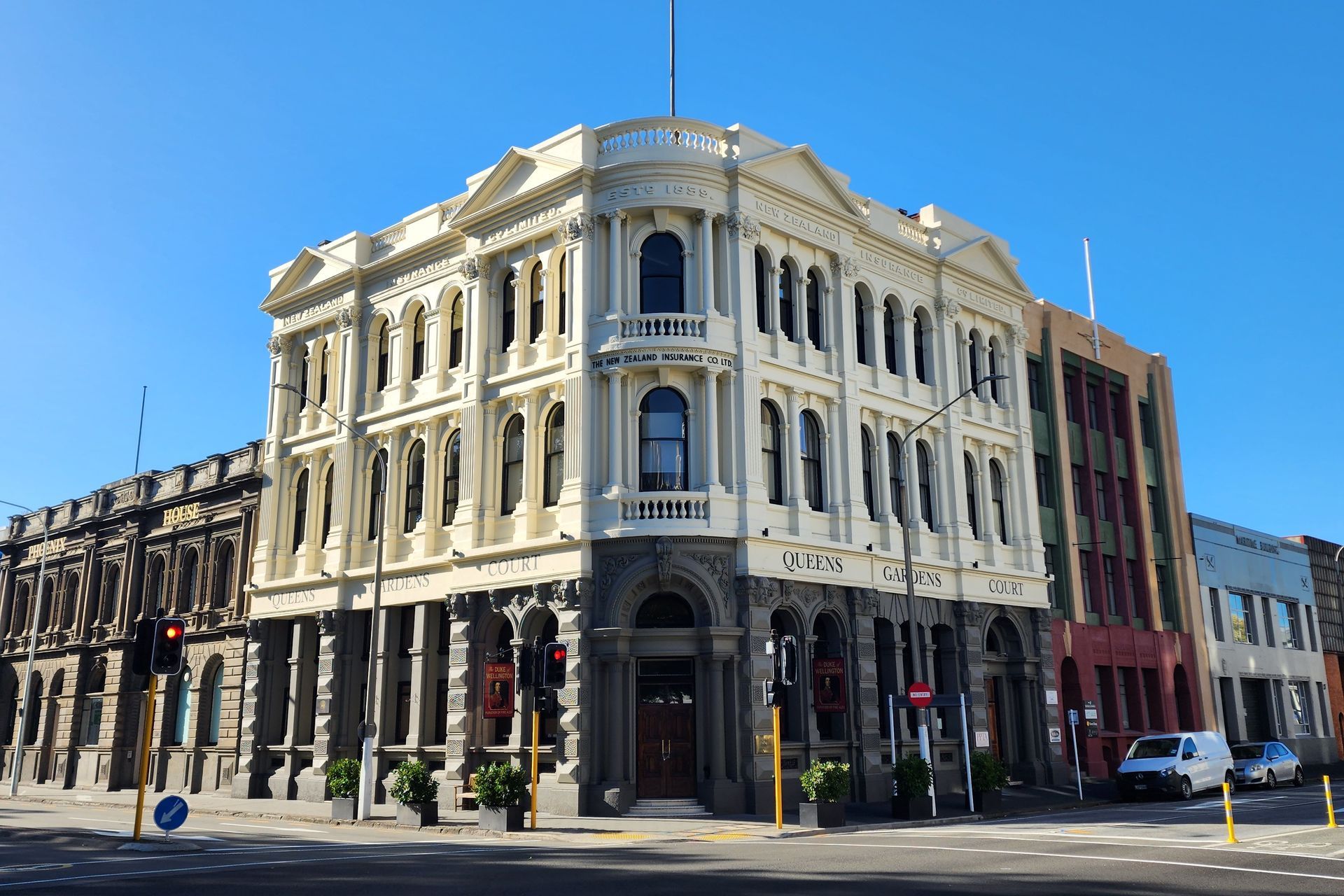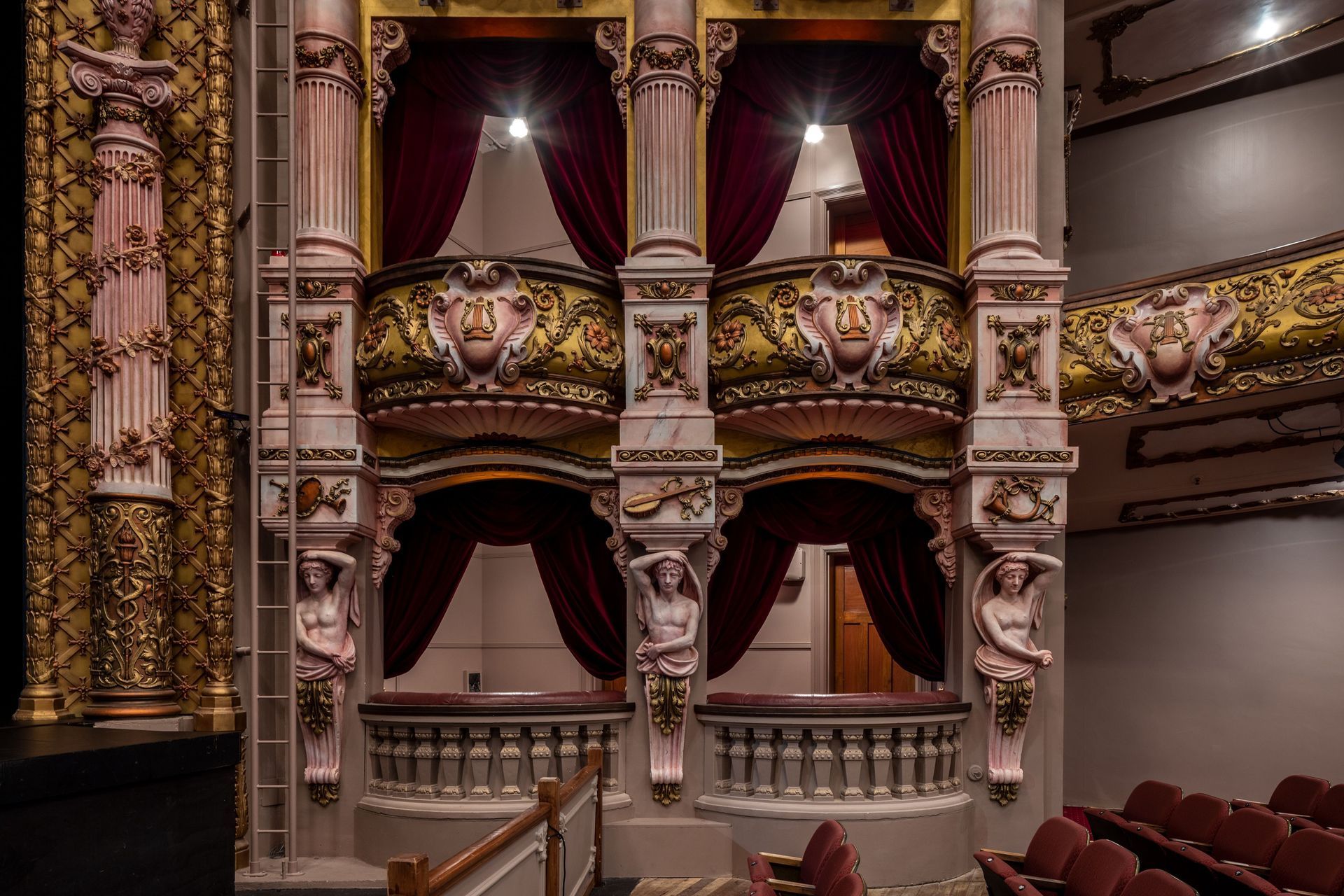Restoring heritage buildings with interior and exterior paint

The art of heritage building restoration requires an intimate knowledge of the past, a comprehensive understanding of the present, and a vision for the future. The choice of materials and their application shape a seamless meeting of the three, in which authentic heritage building restoration is found.
In the early 1900s, Fred Porter, a builder known for his work on iconic Australian landmarks, including Sydney's State Theatre, penned a collection of diaries based on his European travels. Here, he detailed the paint recipes and building techniques he witnessed abroad. His diaries lay untouched until 1982 when his grandson rediscovered them.
The find prompted his grandson to craft lime wash paint in a modest garage in Sydney, and with this, Porter's Paints was born. Since then, Fred Porter's time-tested knowledge has made the brand a favoured choice for those seeking to restore heritage buildings. In the last decade, it was purchased by renowned industry leader Dulux.
The paint selection process for heritage building restoration should start with a meticulous assessment of the building's history, form, and composition. The paint shouldn't mask or alter historical features but rather accentuate them.
"Consider the era of the building, the key architectural features to enhance, and what substrates are there," Shontelle Croswell of Dulux explains. "It could be stone, other cementitious substrates, or something else entirely that may not even be on the market anymore."
These considerations will heavily impact the characteristics required of the paint, but there are some consistent requirements. The paint should be breathable to allow moisture to escape through the walls, helping to prevent damage such as mould. Heritage buildings often use matte or eggshell finishes, so avoid gloss. "Breathable products ensure the integrity of the building is maintained, and matte finishes are important," Shontelle explains.


As a breathable, matte product with up to a 25-year warranty, Porter's Paints Mineral Paint has become a popular choice for heritage restoration. Often coined the 'Rolls Royce' of exterior paints, the premium silicate paint is made with inorganic pigments that are UV stable and, therefore, fade resistant.
Carefully designed for render and other unpainted masonry surfaces, Porter's Paints Mineral Paint chemically reacts with the substrate in a process known as silicification to form an inorganic structure with a durable bond to the substrate. As the paint is microporous, water vapour in the substrate can flow freely, reducing moisture entrapment. "It has a subtle, soft finish, but it's very hard-wearing," Shontelle adds.
For previously painted surfaces, Stone Paint offers a durable, matte finish in two textures, 'fine’ and 'coarse'. The former contains particles of marble dust to create a flat finish, while the latter is infused with particles of graded quartz to form a texture similar to cement bagging. Both use UV-stable tinters to improve their fade resistance.

"After consultation, we recommended Stone Paint 'Fine' and 'Coarse' to restore Queens Garden Court in Dunedin," The Category I listed building is well over a century old, built in 1888 for the New Zealand Insurance Company. "It gives a subtle, stone texture and can be used on several substrates,"
"We also have very traditional lime washes, but they stand up to the rigours of today's expectations and performance," Shontelle adds. One of the oldest types of paints, lime wash, was used across the ancient world. Porter's Paints Lime Wash uses slaked and aged lime to create a soft, weathered finish with mild fungicide properties.
Bonham Architecture and Interiors chose Porter's Paints Ultra Flat Acrylic in 'Moonstone' with a matte acrylic finish for the showroom and gallery in historic Arrowtown. The matte finish plays down surface imperfections by minimising light reflection. It's exceptionally versatile in its application; suitable for exterior and interior use on most suitably prepared plasterboard, plaster, wood, masonry and previously painted surfaces.
"We worked with the specifier and applicator to make sure the brief was achieved and the colour supported the architectural features of the project. It needs to support the outcome but not dominate it," Shontelle adds. The choice was complemented by a black trim using Aquasatin Trim paint, which has an anti-marring, light sheen.

Working with Heritage New Zealand and architects at Shand Shelton, Porter’s Paints helped to restore the magic of Wellington’s St. James Theatre. The Category I building opened its doors in 1912 and has since become home to the Royal New Zealand Ballet.
The restoration used Porter's Paints Eggshell Acrylic and speciality product, Dutchess Satin, in soft pinks, velvety reds, and pale greens in a nod to the original colour scheme. Shades ‘baby doll', ‘haute’, and ‘oyster’ were carefully applied to create marble effects on pillars and detailing.
When it comes to colour, heritage restoration demands much consideration. "A lot of those colours aren't in your usual fan deck, so colour matching is another key component that might be required," Shontelle explains. "It's about the complexity of the colour."
While Porter's Paints has a standard range of colours available, the manual process of colour matching involves taking samples from the building and working closely with tinters to achieve a match that closely mimics the original paint. "We can achieve brights, subtle grey bases and bespoke colours with the brand's unique tinters," Shontelle adds.
The ornate details commonly found in heritage buildings are often painted in gold, which can be restored using AquaGild. Unlike traditional gold paints that tarnish or fade to yellowed browns, AquaGild's encapsulated pigments preserve the authentic appearance in both their gold and silver variations. The pigment used is automotive grade and tarnish resistant, based on synthetically produced glass.

With a hefty list of variables involved, it's helpful to find a partner in the restoration journey. Architects, builders, and homeowners seeking to restore heritage buildings can tap into Porter's expertise. The process begins with contacting Porter's representatives, who facilitate site visits and consultations to understand the project's environment, substrate, and architectural features.
From anti-marring enamel for dark trims to textured stone paint for seamless exteriors, their recommendations will align with aesthetic and performance goals. "Our team works with each architect, applicator, and asset owner on their project," Shontelle shares. "Each project is an individual, so there's no cookie-cutter approach."
Throughout the process, Porter's Paints offers support, including specification writing, visualisation renders, and on-site troubleshooting. This comprehensive approach ensures every restoration project benefits from Porter's legacy of craftsmanship and quality.
The restoration of heritage buildings with interior and exterior paint is a journey that bridges the past and the present and, therefore, involves an intimate understanding of the building's history, form and composition. This knowledge informs decisions on product and colour to ensure heritage buildings remain unwavering features of the built environment.
Shontelle's advice is clear: "We are always available to help and make the process smoother. Reaching out to our team early is a great way to get the support you need, so you can achieve the outcome that you're after."
